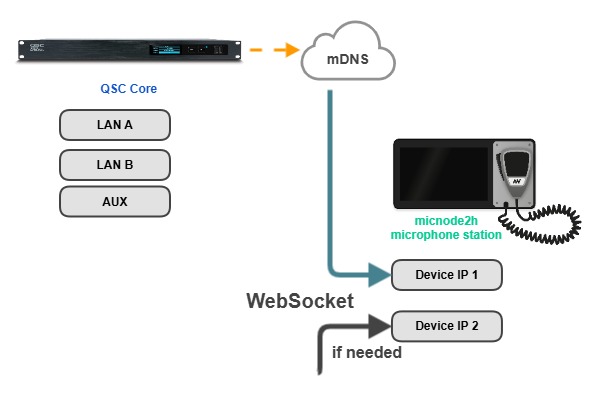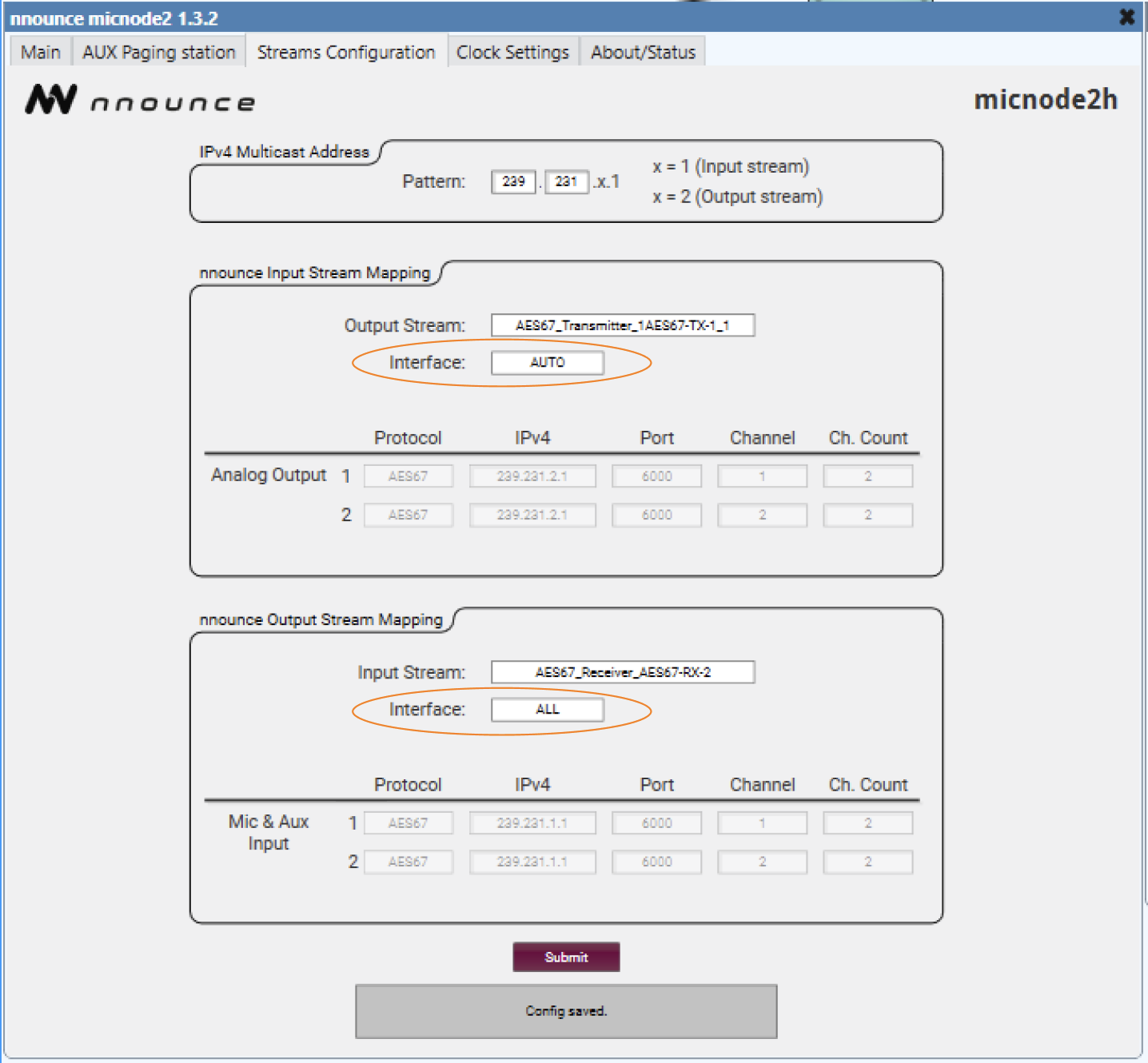- 10 Oct 2025
- 3 Minutes to read
- Print
- PDF
Network Redundancy with Q-SYS
- Updated on 10 Oct 2025
- 3 Minutes to read
- Print
- PDF
.jpg)
Description
For systems where uptime and reliability matter, network redundancy is essential. nnounce devices* are designed with two independent network interfaces (LAN A and LAN B) to ensure continuous operation even during network issues.
This architecture ensures redundancy in all critical areas:
Two independent network links between the device and the Q-SYS Core,
Redundant control communication between the Core and device,
Redundant UCI (User Control Interface) viewer on touch paging stations,
Redundant, uninterrupted audio based on multicast streaming.
The system is built to maintain continuous control, UCI visibility, and audio playback. Audio data is transmitted across both networks simultaneously, allowing for seamless failover without audible drops. Meanwhile, both the control link and UCI web interface actively monitor network availability and automatically switch to the operational path when needed.
In this overview, we’ll walk through how redundancy works in each of these areas — control, UCI, and audio — and explain how the nnounce Q-SYS Plugin handles failover and recovery in real-time.
* nnounce devices with two LAN ports - LAN A and LAN B:
micnode 2h & 2g microphone stations as well as for
ionode 4 audio integration platform and
ampnode 4 amplifier.
Important
These redundant networks must be configured on separate VLANs, as both interfaces share the same MAC address.
Redundancy can be used for TCP socket and WebSocket plugin connection types.
Q-SYS Plugin Operation in Redundancy – Control
Devices are addressed by hostname, and mDNS is used to resolve IP addresses.
The nnounce plugin scans all Core network interfaces (LAN A, LAN B, AUX, etc.) and discovers all IP addresses of the device using mDNS discovery.
Discovered IPs are checked in sequence, and a control link is activated if any network link is available.
The WebSocket connection is initially established on one network. If that network becomes unavailable, the plugin will automatically switch to the second network.

UCI Redundancy
The plugin periodically evaluates network visibility of the Core from the nnounce device.
This is done by loading the UCI (HTML page) from the Q-SYS Core.
In case of network problems, the plugin automatically updates the UCI URL to point to a reachable Core IP from the nnounce device.
Redundant cores are actively checked, and the currently active Core IP is selected.
The UCI (User Control Interface) is automatically reloaded to the reachable IP. This check is done periodically every 30 seconds.
.png)
Audio Redundancy
In redundant network configurations, all network interfaces must be selected to receive or transmit audio. This is configured in the Audio Streams configuration settings.
Redundancy is based on multicast broadcast, and both Core and nnounce devices are transmitting data on all interfaces at all times.
Both networks will have continuous data usage.
This continuous data flow allows for uninterrupted audio, with no audible drop during a network switch.
.jpg)
Connection process:
| UCI - User Control Interface:
|
|---|
Redundancy Operation Information
Live calls are terminated if an abrupt network switch occurs between LAN A and LAN B.
The UCI (User Control Interface) will reload automatically within approximately 30 seconds after a network switch.
Set-up guide
With the QSC plugin version 1.3.2 and nnounce paging stations equipped with two LAN ports, network redundancy is now supported.
Note: This feature requires nnounce firmware version 1.6 or higher.
For proper operation, two separate network connections are required, and all relevant devices must be connected to both networks.
Connection overview:
.png)
Components
Primary Core: The main processing unit handling all paging and audio distribution tasks under normal operation.
Back-up Core: A hot-standby processor that automatically takes over if the primary core fails.
Paging Stations (1 to n): Operator interfaces used for initiating and controlling paging announcements.
LAN A and LAN B Switches: Independent network paths providing redundancy. Each core and paging station is connected to both networks.
Network Redundancy
Every device (primary core, backup core, and all paging stations) connects to two separate LANs (A and B).
In the event of a failure on one network path (e.g., LAN A), all devices remain fully operational via the second path (LAN B).
If the Primary Core fails, the Back-up Core automatically assumes control without interrupting system functionality.
Q-SYS plugin setup
In Q-SYS designer, in micnode2 plugin, set the Configuration Mode to Basic
.png)
In the Streams Configuration tab in micnode2 plugin, select Interface as AUTO for nnounce Input Stream Mapping (LAN A) and ALL for nnounce Output Stream Mapping (LAN B)

In the AES67 Receiver, for Interface choose AUTO


